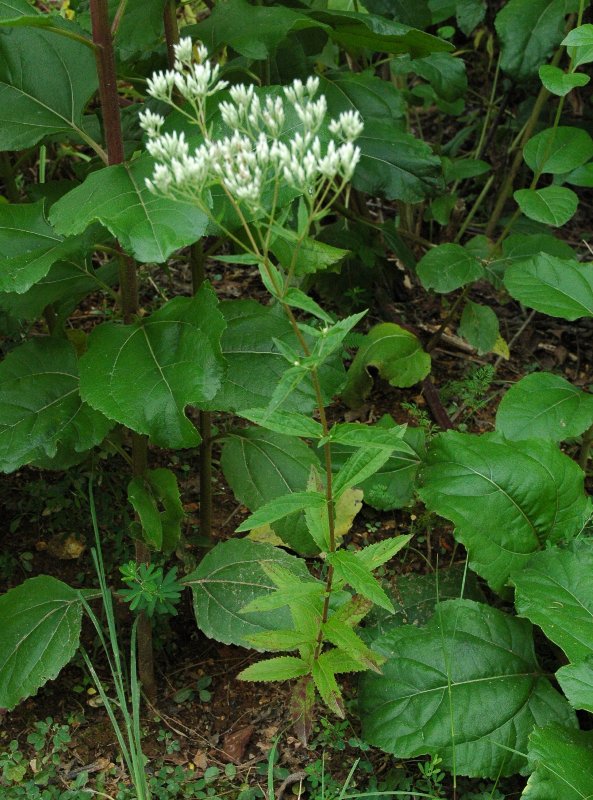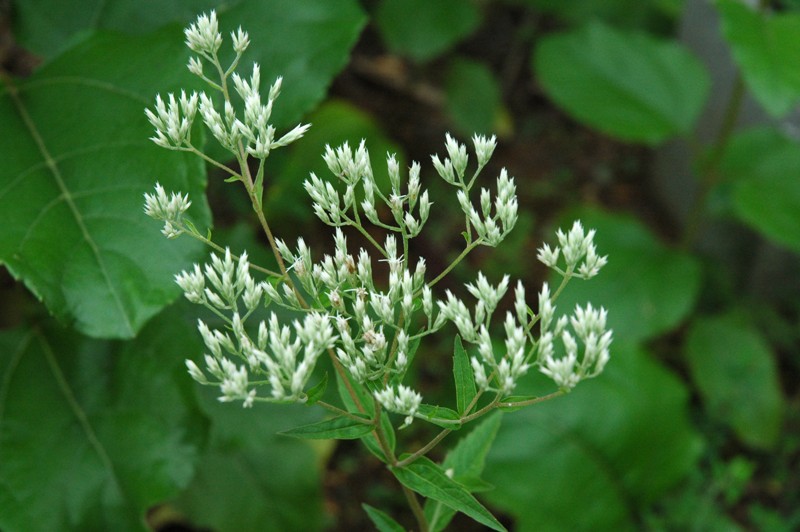Eupatorium vaseyi
NOTE: This taxon has been previously recognized as E. album var. vaseyi, but molecular data show that it is a hybrid-derived apomict that involves E. petaloideum rather than E. album as one of its parents, so it is not appropriate to place it within the latter. Molecular data together with morphology suggest that the other parent is E. sessilifolium. In other cases within Eupatorium allopolyploid apomicts are recognized as distinct species if they are distinctive morphologically.
Distinguishing Features: like other members of the Eupatorium album complex, the involucral bracts are white in color, but in E. vaseyi they all have glands; leaves average more than 80 mm long, and have pinnate venation; pollen is malformed or completely lacking.
Habitat: at edges and within deciduous woodlands.
Geographic Distribution: occurs primarily in the southern Appalachian region and adjacent ridge and valley province.
Similar Species: Eupatorium petaloideum has more attenuate involucral bracts that completely lack glands and shorter leaves; Eupatorium album has leaves that have more glands, but its inner involucral bracts have fewer glands - both species produce normal pollen
Molecular Data, slide 1 ,-, slide 2 ,-, slide 3 : samples of E. vaseyi (DNA #s 2354, 2380, 2477, 2703) have ITS sequences with a pattern of indel and bp polymorphisms that would be produced by a combination of E. petaloideum and E. sessilifolium.
Images

